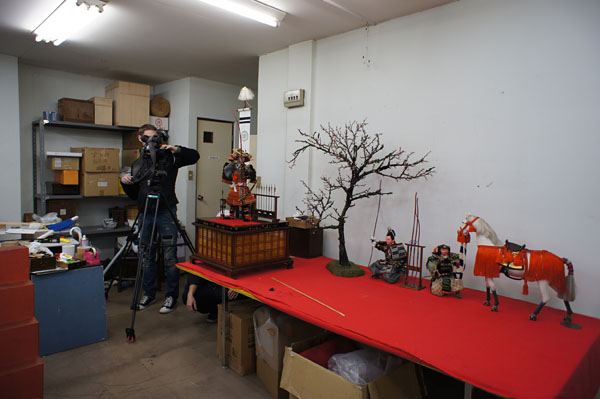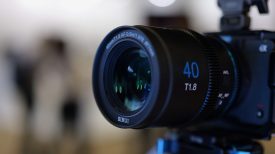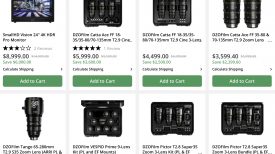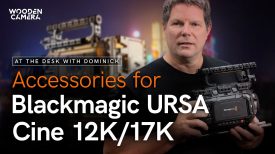By Matthew Allard
Karakuri from Matthew Allard on Vimeo.
I shot this short film for Aljazeera’s Frames four days before the devastating earthquake and tsunami struck Japan.
This is one of the first things I shot on my Sony F3. It had arrived for me in Tokyo on the first of February but I was unable to pick it up till the 28th. I managed to get the second production model ever made. I have been waiting for this camera since it was first announced back at NAB 2010 and it was definitely worth the wait.
I was in Osaka to shoot a short on the Karakuri (Japanese automata). Modern day robots can be traced back to these devices, which are 200-300 years old and were created by skilled craftsmen of the Edo period. By the use of weights and pulleys these ancient robots are able to perform amazing tasks without the use of electronics or power.
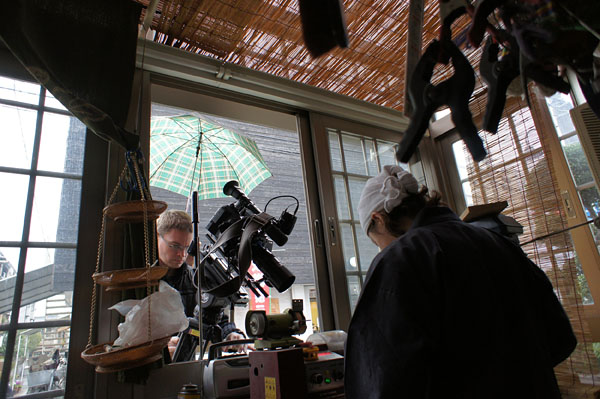
Hideki Higashino is one of the few who is keeping these incredible creations alive. His father recently had a stroke and is passing on his legacy to Hideki.
I wanted to show the intricate detail, small size and precision of these robots.
This shoot was the perfect place to really push the F3. Its ability to capture such a high dynamic range was especially crucial for a few of the shots. Shooting into the workshop from outside while trying not to over-expose the street and under-expose the workshop would test any camera. The F3 handled this amazingly well. Shooting onto the SxS cards at 4.2.0 35Mb/s showed just how good this camera is out of the box. With the ability to shoot S-log via a paid firmware update just around the corner, this camera will have even more amazing capabilities. Using S-log will increase the camera’s base sensitivity to 1600ISO. Truly spectacular for a camera at this price.
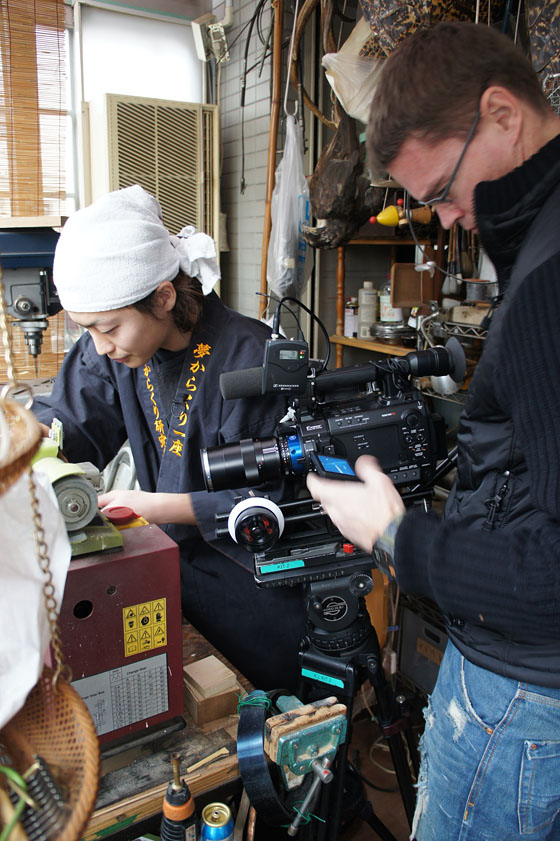
For this shoot I used the three Sony PL primes (35,50 and 85mm) as well as the Tokina 11-16mm f2.8 and the Zeiss ZF 100mm Macro Planar f2.0, the latter two via a Nikon MTF to F3 adaptor. Everything was shot using available light except for the tumbling Karakuri and when Hideki was using the sandpaper. I don’t like over lighting things and try to keep things as natural as possible. A lot of the story was shot using the Zeiss macro. I cannot rave about this lens enough. It is super sharp and when mounted on the F3 provides incredible amounts of detail.
As I’ve previously used the Canon 7D, 5DmkII, 1DmkIV and 60D, people are bound to ask me what the main differences are compared to a camera like the F3. For me the biggest difference is ease of use. Having all the controls at your fingertips, built in ND, proper audio and a convenient recording format make all the difference. As far as image quality goes, in my opinion, the F3 has a more organic look than DSLR. Saying that, I still love the image that a 5DmkII or a 7D produces. The DSLR has a unique look but it is let down by massive compression. I notice with the F3 that the level of detail is incredible. On this shoot I could see tiny grains of metal, the lines on people’s fingers and the intricate patterns on the robots’ clothing.
Do I prefer the F3 over say a 5DmkII? Yes I do, but of course that should be the case as it’s a much more expensive camera. I can’t recommend it enough. It is a video camera by design and not a stills camera. The new breed of DSLRs will not just die off; they still do an amazing job and they are very hard to beat in terms of bang for your buck. Even with all the toys and expensive cameras out there, don’t lose sight of the fact that the most important aspect of shooting anything is the story and the characters within that story. You can make anything great if it’s a good story regardless of whether you have an Arri Alexa or a Canon 550D. Equipment can help but ultimately it comes down to you.
About Matthew Allard, Aljazeera Senior Field Cameraman, Kuala Lumpur:
Matt has been a Camera/Editor in TV news for 20 years, previously working for both Channel 9 and Channel 10 in Australia. Twice Network Ten Australia’s cameraman of the year as well as being a Walkley Finalist for outstanding camerawork in 2006 (for coverage of the Cronulla Race Riots) and a Logie Finalist for outstanding news coverage 2006 (Bali 9). He has covered news events in more than 30 countries, from major sporting events to terrorist bombings. Based out of the Kuala Lumpur broadcast centre in Malaysia he is an avid user and follower of new technology, shooting stories on HD broadcast cameras as well as new Canon DSLRs.

